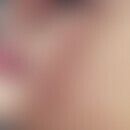DefinitionThis section has been translated automatically.
The RSPO4 gene (RSPO4 stands for R-spondin 4) is a protein-coding gene located on chromosome 20p13. Alternative splicing results in multiple transcript variants. The RSPO4 gene encodes a member of the R-spondin family of proteins that share a common domain organization consisting of a signal peptide, a cysteine-rich/furin-like domain, a thrombospondin domain, and a C-terminal basic region.
General informationThis section has been translated automatically.
The encoded protein is likely involved in the activation of the Wnt/beta-catenin signaling pathway, which acts as a ligand for LGR4-6 receptors. Upon binding to LGR4-6 (LGR4, LGR5, or LGR6), LGR4-6 associates with phosphorylated LRP6 and Frizzled receptors, which are activated by extracellular Wnt receptors and trigger the canonical Wnt signaling pathway to increase the expression of target genes.
Mutations in this gene are associated with anonychia congenitalis (congenital nonsyndromic nail disorder 4).
LiteratureThis section has been translated automatically.
- Al Hawsawi K et al (2002) Anonychia congenita totalis: a case report and review of the literature. Int J Derm 41: 397-399.
- Bergmann C etn al (2006) Mutations in the gene encoding the Wnt-signaling component R-spondin 4 (RSPO4) cause autosomal recessive anonychia. Am J Hum Genet 79: 1105-1109.
- Blaydon DC et al (2006) The gene encoding R-spondin 4 (RSPO4), a secreted protein implicated in Wnt signaling, is mutated in inherited anonychia. Nature Genet. 38: 1245-1247.
- Bruchle NO et al. (2008) RSPO4 is the major gene in autosomal-recessive anonychia and mutations cluster in the furin-like cysteine-rich domains of the Wnt signaling ligand R-spondin 4. J Invest Derm 128: 791-796.
- Chisti MS et al (2008) A novel missense mutation in RSPO4 gene underlies autosomal recessive congenital anonychia in a consanguineous Pakistani family. Brit J Derm 158: 621-623.
- Hopsu-Havu VK et al (1973) Anonychia congenita. Arch Derm 107: 752-753.
- Littman A et al (1964) Anonychia as a recessive autosomal trait in man. J Invest Derm 42: 177-178.
- Mahloudji M et al. 1971) Simple anonychia: further evidence for autosomal recessive inheritance. J Med Genet 8: 478-480.
- Ozdemir O et al (2004) Total anonychia congenita: a rare heterogeneic disorder. Genet. Counsel15: 43-46.
- Timmer J et al (1969) Anonychia congenita totalis van vingers en tensen. Nederl T Geneesk 113: 395-397.



